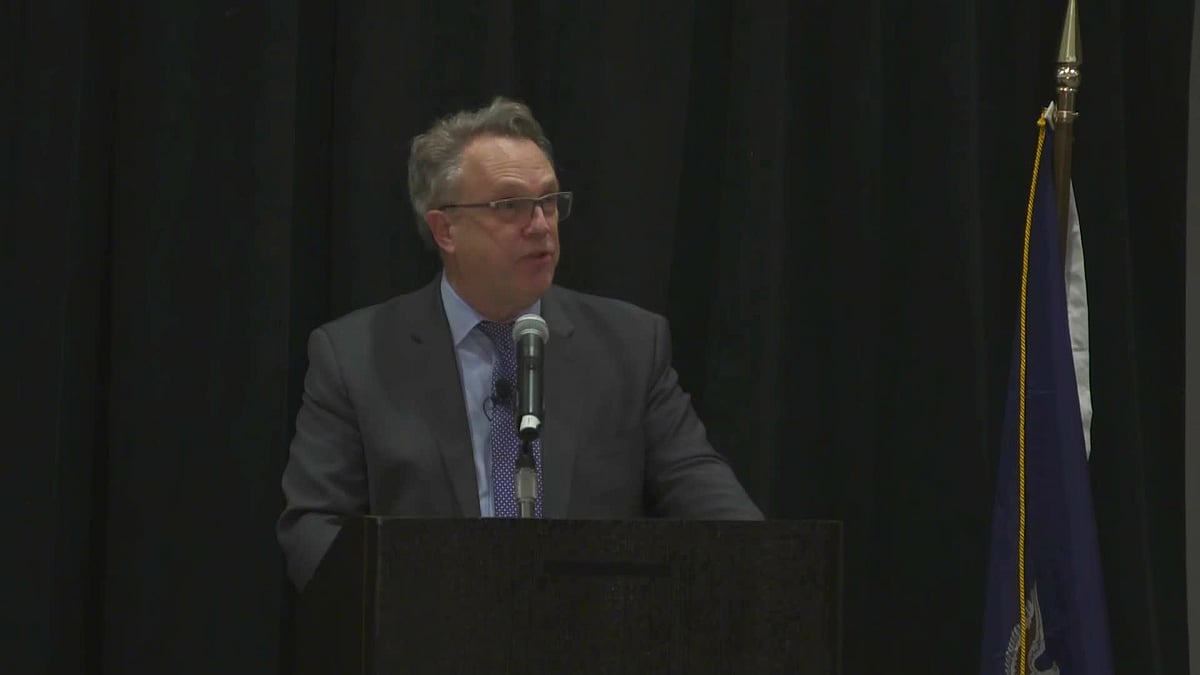Fed’s John Williams Says Rates Are High Enough To Cool Inflation To Goal
The New York Fed chief said it would be natural for interest rates to decline as inflation falls but the timing and speed of any cuts would be dependent on the path of inflation and the economy.

(Bloomberg) -- Federal Reserve Bank of New York President John Williams said monetary policy is now tight enough to guide inflation back to the Fed’s target, but suggested policymakers need more evidence of cooling inflation before cutting interest rates.
“My base case is that the current restrictive stance of monetary policy will continue to restore balance and bring inflation back to our 2% longer-run goal,” Williams said Wednesday in White Plains, New York.

“I expect that we will need to maintain a restrictive stance of policy for some time to fully achieve our goals, and it will only be appropriate to dial back the degree of policy restraint when we are confident that inflation is moving toward 2% on a sustained basis,” he said.
The New York Fed chief said it would be natural for interest rates to decline as inflation falls — a sentiment expressed by several other policymakers in recent weeks — but the timing and speed of any cuts would be dependent on the path of inflation and the economy.
“As inflation comes down over time” and the economy and labor market re-balances, Williams said, “my expectation is interest rates will also come down over time.”
“The timing of when that happens and the speed at which that happens will depend on how inflation evolves, how the economy evolves,” he said.
Read more: Do You Dot Plot? Understanding How the Fed Forecasts: QuickTake
The tone of Williams’ comments differed from those he made on Dec. 15, when he said the near-term question for Fed officials was whether policy was “sufficiently restrictive” to ensure inflation comes back to 2%. At the time, he also added that officials “aren’t really talking about rate cuts.”
Policymakers are expected to leave interest rates steady when they meet this month, giving themselves more time to evaluate the economy after raising rates aggressively from near zero to above 5%. At the same time, bond traders are betting on an abrupt end to the central bank’s tightening cycle, though expectations of a March interest-rate cut have eased.
Not ‘Stuck’
Data released last week showed the US job growth picked up in December and wage gains exceeded expectations. That labor market strength has fueled steady consumer spending and healthy economic growth despite high lending costs. Meanwhile, inflation has slowed, and consumer price data released Thursday is expected to show further softening.
Williams also appeared more optimistic about the outlook for inflation.
“I’m not worried about inflation kind of getting stuck at too high a level — like 3 or 4% — right now,” he said. “Things are moving in the right direction.”
In his latest speech, Williams also pushed back on Dallas Fed President Lorie Logan’s assertion that policymakers should begin discussing slowing its balance-sheet runoff, a process known as quantitative tightening. He said bank reserves are little changed from levels seen before the central bank embarked on QT.
“In its plans, the FOMC said that to ensure a smooth transition it intends to slow and then stop the decline in the size of the balance sheet when reserve balances are somewhat above the level it judges to be consistent with ample reserves,” he said. “So far, we don’t seem to be close to that point.”
Williams, however, acknowledged that demand for reserves is much higher than it was that last time the Fed talked about slowing the first round of QT, but it’s unclear how much larger the amount is.
Minutes of the Fed’s December gathering showed several participants said it would be appropriate to begin discussing the guidance that would determine when the Fed starts tapering the unwind, sparking a wave of discussion among market participants as to when the central bank will begin pulling back.
Willliams also pointed to recent remarks by Michael Barr, the Fed’s vice chair for supervision, that the central bank is unlikely to extend an emergency loan program that it started last year during the regional banking crisis. Williams said the program had achieved its goal and served its intended purpose of making sure liquidity was available.
(Adds additional comment from Williams to reporters in 14th paragraph.)
More stories like this are available on bloomberg.com
©2024 Bloomberg L.P.